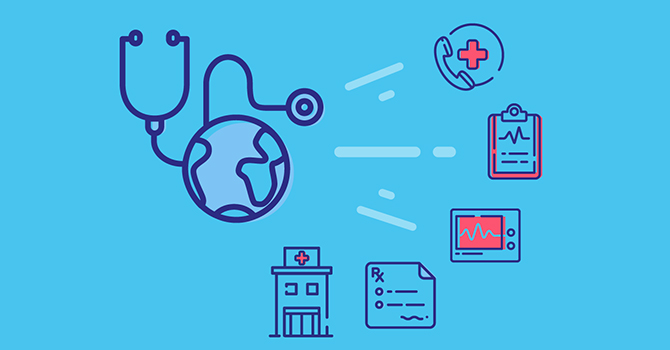Comprehensive Healthcare RCM for Improving Patient Billing and Payments
Comprehensive Healthcare RCM for Improving Patient Billing and Payments
Blog Article
A Comprehensive Overview on How Healthcare RCM Works to Simplify Payment and Collections
Navigating the intricacies of health care earnings cycle administration (RCM) is important for companies intending to boost their invoicing and collections processes. The guide unboxes the complexities of RCM, from patient registration to balance dues monitoring, providing understandings right into optimizing each action. Incorporating advanced technology and standardized procedures can substantially reduce claim rejections and increase payment cycles. Yet, the real challenge hinges on seamlessly combining these components to improve cash money flow. As we discover the core parts and methods that drive performance, one inquiry stays: how can medical care entities finest setting themselves to flourish monetarily in an ever-evolving industry?
Recognizing Earnings Cycle Monitoring
Comprehending the intricacies of Profits Cycle Monitoring (RCM) is crucial for health care organizations intending to maximize their financial performance. RCM is an important administrative function that encompasses the whole financial procedure of client treatment, from the first consultation readying to the last settlement of the equilibrium. It is a complex procedure designed to determine, accumulate, and handle the income from the solutions offered to patients. Effective RCM guarantees that doctor receive accurate and timely repayments, lessening the risk of income loss and boosting capital.
The RCM procedure starts when an individual timetables a visit and expands via the patient's treatment journey, consisting of invoicing and collections. An essential purpose is to lower the time between obtaining and offering a service settlement, hence improving the company's monetary wellness. RCM involves various functions such as client enrollment, insurance coverage confirmation, fee capture, coding, claims entry, settlement uploading, and handling allures and denials.
Secret Elements of RCM
In the world of Revenue Cycle Management (RCM), understanding its crucial components is essential to attaining financial performance within medical care organizations. RCM is a thorough process that encompasses different phases, each critical to making certain effective billing and collections. The primary parts consist of individual enrollment, insurance policy confirmation, fee capture, coding, case submission, payment uploading, and balance due monitoring.


When coded, insurance claims are sent to payers, where precision is paramount to prevent denials or hold-ups - Healthcare RCM. Payment uploading includes videotaping the obtained settlements, which permits the settlement of accounts. Finally, balance dues monitoring concentrates on monitoring and dealing with unpaid insurance claims, making sure prompt follow-up and resolution
Each part of RCM is interconnected, and inadequacies in any kind of part can interfere with the entire cycle. Consequently, mastering these elements is essential for doctor to enhance revenue and enhance their economic wellness.
Strategies for Efficient Invoicing

Standardizing payment treatments across the organization is an additional key technique. Establishing clear standards for paperwork, coding, and submission helps keep uniformity and compliance with governing demands. Training personnel consistently on these treatments makes certain every person is up-to-date with the latest adjustments in invoicing codes and payer plans.
Precise charge capture is necessary in avoiding revenue leak. Implementing normal audits and tracking systems permits for the recognition and modification of inconsistencies prior to they impact profits. Furthermore, maintaining open lines of communication with payers aids to swiftly resolve any type of disputes click over here now or misconceptions that may develop.

Last but not least, interesting clients early in the invoicing process by providing clear quotes and navigate to this website academic materials about their economic obligations can considerably decrease confusion and improve settlement timeliness. These methods collectively contribute to an extra efficient and monetarily healthy payment system.
Enhancing Collections Procedures
A durable collections procedure is vital for keeping financial security within medical care organizations. Offered the complexities of clinical payment and the variety of payer needs, enhancing the collections process includes carrying out strategic actions that ensure prompt and exact payment of solutions made. Central to this is using technology to automate and simplify processes, lowering manual mistakes and boosting performance. Automation tools can help in tracking case standings, sending out timely pointers to individuals, and managing rejections better.
Educating team to recognize the nuances of insurance plans and payment codes is just as essential. This expertise equips them to attend to invoicing disparities promptly and interact efficiently with people concerning their financial duties. Moreover, transparent and clear individual interactions are vital. Offering thorough descriptions of charges and using adaptable layaway plan can enhance individual contentment and punctual repayments.
Routine audits of the collections procedure ought to be conducted to recognize locations for improvement and ensure conformity with policies. By evaluating information, healthcare companies can determine patterns, prepare for prospective issues, and adjust approaches accordingly (Healthcare RCM). Eventually, a well-enhanced collections procedure not only supports economic health and wellness however likewise adds to a more smooth experience for clients and team alike
Optimizing Income Streams
Building upon the structure of a solid collections process, health care organizations can even more strengthen their financial security by tactically optimizing profits streams. This involves a multi-faceted strategy, beginning with a thorough evaluation of existing income sources to identify inadequacies and areas for growth. Using sophisticated information analytics devices enables organizations to obtain understandings right into payer mix, patient demographics, and service utilization patterns, permitting data-driven choices that boost official website income capture.
Implementing automated invoicing systems can considerably decrease mistakes and speed up insurance claims processing, making sure that earnings is accumulated a lot more effectively. In addition, maximizing payer agreements via regular negotiations can improve reimbursement rates and terms, directly impacting the lower line. Diversifying service offerings, such as integrating telehealth or wellness programs, can likewise bring in a broader patient base, thus raising earnings possibility.
One more important element is improving person interaction and satisfaction, as pleased patients are most likely to comply with therapy plans and make prompt settlements. Offering versatile settlement choices and transparent payment techniques can boost collections and foster client loyalty. Healthcare RCM. By adopting these techniques, health care organizations can produce a more durable financial framework, ensuring continual growth and stability in an ever-changing sector landscape
Final Thought
In conclusion, medical care Income Cycle Administration (RCM) plays a crucial duty in enhancing invoicing and collections processes by integrating vital elements such as person registration, insurance coverage verification, cost capture, coding, claims entry, and receivable management. By utilizing innovative technology, systematizing procedures, and cultivating client involvement, medical care suppliers can significantly minimize insurance claim denials, accelerate settlement cycles, and enhance money flow. This detailed method to RCM inevitably leads to boosted economic efficiency and sustainability for healthcare organizations.
The RCM procedure begins when a person schedules an appointment and extends with the person's care trip, consisting of billing and collections.Another essential part is enhancing client interaction and satisfaction, as completely satisfied individuals are extra most likely to stick to therapy plans and make timely payments. Providing versatile payment options and transparent invoicing techniques can enhance collections and foster patient loyalty.In final thought, medical care Revenue Cycle Management (RCM) plays a critical duty in optimizing billing and collections processes by incorporating essential components such as individual enrollment, insurance verification, charge capture, coding, asserts submission, and accounts receivable administration. By employing advanced technology, standardizing procedures, and promoting client interaction, healthcare companies can substantially minimize insurance claim denials, speed up repayment cycles, and enhance money flow.
Report this page